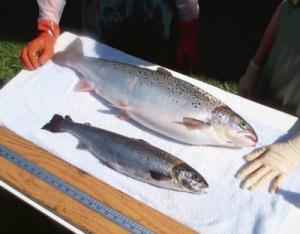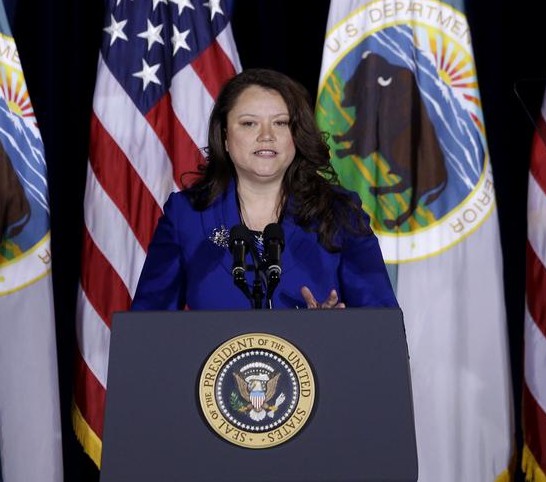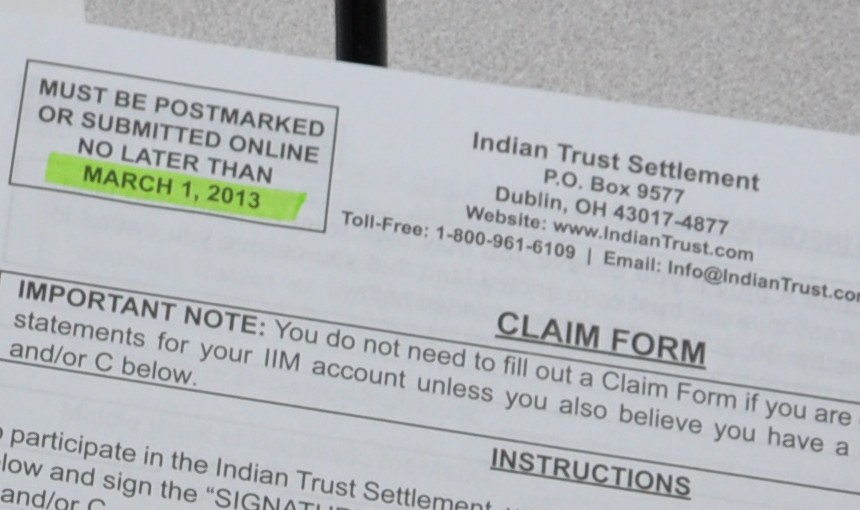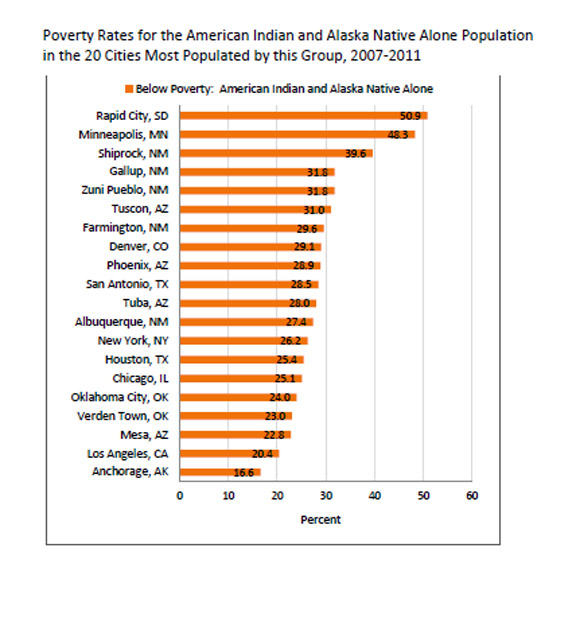Published: March 5, 2013
By ERIKA BOLSTAD — Anchorage Daily News
WASHINGTON — Every summer since 1979, Kim Hubert has fished for sockeye salmon in Alaska’s Bristol Bay. It’s a family business in tiny Togiak that has, from time to time, also employed his wife and three children.
Hubert and his 21-year-old daughter work the nets now. They’re small permit holders who may catch and sell thousands of salmon in their nets each year, depending on the success of the run.
“We’ve got a fish camp out there, we enjoy the people and the bay and the work,” said Hubert, 58, a retired schoolteacher who lives in Eagle River. “Some years we lose a few bucks, and some years we make a few.”
They and other fishermen have been casting a wary eye on Washington, where the Food and Drug Administration is considering whether AquaBounty, a Massachusetts-based company with a lab on Prince Edward Island in Canada and growing facilities in Panama, may sell genetically engineered salmon to consumers in the United States.
More than 33,000 fishermen, environmentalists, food safety advocates and others have written to the FDA with concerns about the agency’s preliminary findings. Among the worries is that the genetically engineered fish might escape and mix with wild salmon. The company says that’s unlikely, not only because the fish are sterile but also because of its production process.
But there’s a reason that Alaska bans salmon fish farms in the state, the Sitka Conservation Society, an environmental group in southeast Alaska, said in its letter to the FDA. They fear that the company will expand to the U.S., where the fish would be closer to native salmon populations.”
These farms pollute water with concentrated fish waste and feed, spread sea lice and ultimately lead to escapement and interbreeding,” the organization said. “If genetically modified salmon are permitted, it will be only a matter of time before they are muddling the pure wild population in Alaska.”
Mostly, though, fishermen in Alaska fear that the new, faster-growing farmed fish would threaten their livelihood eventually by flooding the market with cheap fish. They’re also pressing for the AquaBounty salmon to be labeled as genetically engineered because they think that their wild-caught, more expensive product is superior. They want no confusion in the marketplace.”
In some ways I felt threatened,” Hubert said. “The threat may not be immediate, but I think down the line there could be some repercussions. We’ve had a lot of issues with labeling, and the ability (of consumers) to choose and know where the fish come from: what kind of stocks, whether they’re farmed or wild fish.”

The AquaBounty fish are Atlantic salmon that have been genetically altered with growth genes from a Chinook salmon and a sea eel. That makes them grow faster than other farmed Atlantic salmon, although they don’t get any bigger than regular salmon.
The FDA issued a preliminary finding in late December that the fish, known as the AquAdvantage Salmon, is as safe as eating conventional Atlantic salmon and that there’s a reasonable certainty of no harm in consuming it. The agency also issued a draft environmental assessment that there’s little chance of environmental harm from farming the fish.
However, after pressure from Congress — especially from Alaska lawmakers — the FDA in February extended the public comment period on its findings by 60 days. People have until April 26 to weigh in, and after that the agency will decide whether to issue a final report or pursue a more comprehensive environmental impact statement.
AquaBounty executives aren’t currently granting interviews. The company’s last public statement came in mid-February, when the FDA announced that it would extend the comment period. AquaBounty Chief Executive Officer Ron Stotish said at the time that they weren’t pleased with the delay.
Some food safety advocates are pushing for the FDA to do a full environmental review. They’re also petitioning the agency to consider the AquaBounty fish as a food additive rather than as an animal drug. The FDA uses its animal drug process to consider the safety of all potential genetically modified animals sold as food.
That change would make the approval process more transparent, as well as focus on the safety of the salmon as food, said Patty Lovera, the assistant director of Food & Water Watch. It joined Consumers Union, which is the advocacy division of Consumer Reports, and the nonprofit Center for Food Safety to petition the FDA.”
We just think it’s really deficient on the food front,” Lovera said. “What do we really know about allergies? What do we know about nutrition profile? That stuff’s really sketchy in that application that they put in. And we’d like to see a lot more of that, considering you’re going to eat the whole thing.”
People and animals already consume plenty of genetically modified grains, which aren’t required to be labeled in the U.S. A ballot measure requiring such labeling failed recently in California.
But the fish are the first genetically engineered animals being considered for human consumption in the U.S., and the approval process is being closely watched in the biotech field.
There’s a huge market for heart-healthy fish: Salmon is the second most popular seafood consumed in the U.S., behind tuna. And an estimated 91 percent of the seafood consumed in this country is imported; about half of that is from aquaculture.
Even if the AquaBounty fish is approved, however, supermarkets won’t be flooded with genetically engineered fish anytime soon, said Gregory Jaffe, the director of biotechnology at the Washington-based Center for Science in the Public Interest, an advocacy organization. Jaffe was on the FDA advisory panel that reviewed the safety of the salmon in 2010 and found no cause for alarm.
AquaBounty would have to reapply to the FDA to expand operations.
“They talked about hundreds of tons of salmon a year. We import hundreds of thousands of tons of salmon a year,” Jaffe said. “So maybe it’ll be slightly easier to eat one of these salmon steaks than to win the lottery. But if someone wanted to find one of these salmon steaks out there to eat, it’s going to take a little effort.
“That hasn’t stopped lawmakers from Western states from fighting the FDA findings — or at a minimum, seeking a requirement that genetically engineered salmon be labeled. Consumer groups are making the same push.
“Any fish that is labeled as wild-caught, or Alaskan, might see some of its market actually go up,” said Michael Hansen, a senior scientist for Consumers Union. “Since this will not be labeled, people would not know whether the regular salmon they’re buying is engineered or not.
“In his mid-February statement, AquaBounty’s Stotish noted that no new facts had been introduced since the FDA’s findings late last year and that the company doesn’t think the additional comment period “materially affects our chances for approval.”
“There has been neither new information nor a clear legal or regulatory issue raised by the FDA since that time,” he said in the statement.
AquaBounty says in its press materials that it wants its fish to be labeled “Atlantic salmon.” The company says the nutritional and biological composition of its AquAdvantage Salmon is identical to Atlantic salmon, and therefore doesn’t require additional labeling based on its method of production.
The company notes that it supports voluntary branding by the farmers who grow its salmon, to identify what it calls “the environmentally friendly benefits of this product.”
An FDA spokeswoman, Theresa Eisenman, said a decision hadn’t yet been made regarding labeling AquAdvantage Salmon.
The FDA since 1992 has considered bioengineered foods to be no different from other foods “in any meaningful or uniform way.” The agency supports voluntary labeling that provides consumers with such information, however.
Email: ebolstad@mcclatchydc.com
Read more here: http://www.adn.com/2013/03/05/2812889/objections-mount-as-fda-considers.html#disqus_thread












